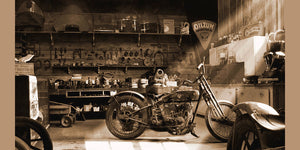Top MX Gear NZ: Get Ready for Your Following Off-Road Experience
Wiki Article
Understanding the Crucial Parts of a Motorbike: A Comprehensive Guide for Lovers
For motorcycle fanatics looking to raise their riding experience and ensure their bikes run efficiently, understanding the crucial components of a motorbike is paramount. Each aspect, from the engine's detailed workings to the crucial function of the stopping mechanisms, not just impacts performance yet likewise safety and convenience. This guide will walk with the essential components that every cyclist ought to recognize with, enabling informed selections in both upkeep and potential upgrades. As we begin this expedition, one must ask: exactly how does each element communicate to produce the seamless experience every enthusiast looks for?Engine Parts

The camshaft plays a critical role in regulating the timing of the engine's valves, making certain the accurate opening and closing necessary for reliable fuel and air intake, as well as exhaust expulsion. This timing is crucial to preserving ideal engine efficiency and effectiveness. Additionally, the carburetor or fuel shot system, depending on the bike design, is in charge of mixing air with gas in the correct ratio for combustion.
The air conditioning system, either air or liquid-based, functions to maintain the engine's temperature level within functional restrictions, preventing overheating and ensuring long life - mx gear nz. Each element, carefully created and incorporated, contributes to the smooth operation of the engine, defining the motorbike's power result and overall performance
Transmission System
Important to the bike's performance, the transmission system ensures efficient power transfer from the engine to the wheels. This system makes up a number of important components, including the clutch, gearbox, and final drive, each playing a vital function in equating the engine's power into movement. The clutch, usually operated by a hand lever, serves to disengage the engine and involve from the transmission, permitting smooth equipment adjustments and regulated acceleration.The transmission, commonly described as the transmission appropriate, includes a set of equipments that cyclists can by hand change with to readjust the bike's speed and torque output. These gears are arranged in a series that makes it possible for the motorcycle to accelerate efficiently and preserve optimum engine efficiency throughout various speeds. The majority of bikes make use of a consecutive gearbox, requiring the motorcyclist to change equipments in a predetermined order.
Braking Devices
While recognizing the transmission system is crucial to taking advantage of a motorcycle's power, equally crucial is the capacity to regulate and quit that power successfully, which is where braking devices come right into play. Brakes are important for safety and security and performance, offering the biker with the needed control to browse numerous surfaces and problems. Normally, bikes feature 2 types of braking systems: disc brakes and drum brakes.Disc brakes are more common in modern motorcycles due to their exceptional performance. This system provides better heat dissipation, consistent performance, and improved stopping power, particularly in wet conditions.
Conversely, drum brakes, though much less common, are still found in some motorbikes. They work by pushing brake footwear against the inner surface of a drum connected to the wheel. While normally less effective in warmth dissipation and quiting power, drum brakes are easier and extra cost-effective.
Recognizing these stopping systems' subtleties permits cyclists to maintain their bikes correctly and appreciate the see it here engineering that guarantees effective and safe stopping.
Suspension and Steering
Suspension and steering systems are crucial elements that considerably influence a bike's handling and adventure convenience. The suspension system, containing forks at the front and shock absorbers at the back, soaks up road irregularities, improving stability and control. Front forks, inverted or generally telescopic, compress and rebound to mitigate influences, while back shock absorbers keep tire contact with the roadway, critical for traction and safety.Steering, focused around the handlebars, links the rider to the bike's directional control. The guiding head bearings ensure smooth operation, permitting specific maneuverability. Appropriate alignment and maintenance of these bearings are crucial for predictable guiding reaction and reducing rider fatigue.
The suspension's adjustability is one more crucial aspect; preload, damping, and rebound setups enable personalization to suit various riding styles and conditions. This flexibility is necessary for maximizing performance, visit this web-site whether browsing metropolitan streets or tackling tough trails. Developments like digital suspension systems supply real-time adjustments, improving adventure quality throughout varied terrains.

Electrical Solutions
After guaranteeing a smooth and controlled adventure with efficient suspension and guiding systems, attention transforms to the electric systems, a crucial element of modern motorbikes. These systems play an essential function not only in starting the engine yet also in powering numerous parts that improve the capability and security of the motorbike.At the heart of a motorcycle's electrical system is the battery, which shops electric energy needed for beginning the engine and powering complementary systems - motorbike shop. The generator or generator, paired with the rectifier-regulator, guarantees the battery stays billed while the bike functions, converting power into electrical energy and preserving voltage degrees
The ignition system, another important component, is in charge of firing up the air-fuel mix in the engine's cyndrical tubes. Modern motorbikes frequently make use of a digital ignition system, offering greater effectiveness and reliability compared to traditional systems.
Lighting systems, including headlights, tail lights, and indicators, are also crucial, making sure presence and safety for the rider. Additional digital components such as sensing units, control devices, and shows add to advanced features like gas injection monitoring, anti-lock braking systems (ABDOMINAL), and digital dashboards, better boosting the riding experience.
Final Thought
A comprehensive comprehension of a bike's necessary elements, consisting of the engine, transmission system, stopping mechanisms, suspension, steering, and electrical systems, is vital for lovers aiming to maximize convenience, efficiency, and safety. Proficiency of these aspects permits notified choices relating to maintenance and upgrades, inevitably boosting the riding experience. By incorporating this knowledge, riders can guarantee their motorcycles run at peak efficiency and integrity, therefore making best use of both satisfaction and long life of their lorries.For bike check these guys out lovers looking to boost their riding experience and guarantee their bikes run smoothly, recognizing the important elements of a motorbike is vital.Indispensable to the bike's performance, the transmission system makes certain efficient power transfer from the engine to the wheels.While comprehending the transmission system is key to taking advantage of a motorbike's power, equally important is the ability to control and stop that power efficiently, which is where braking mechanisms come right into play. Typically, motorcycles include 2 kinds of stopping systems: disc brakes and drum brakes.
A complete understanding of a motorbike's crucial components, consisting of the engine, transmission system, stopping systems, suspension, steering, and electric systems, is vital for fanatics aiming to enhance comfort, safety, and efficiency.
Report this wiki page